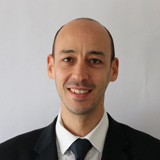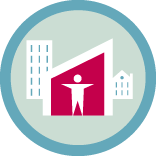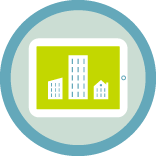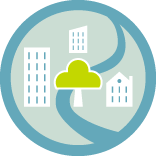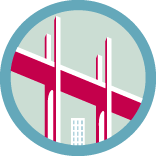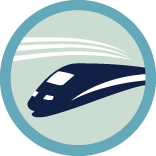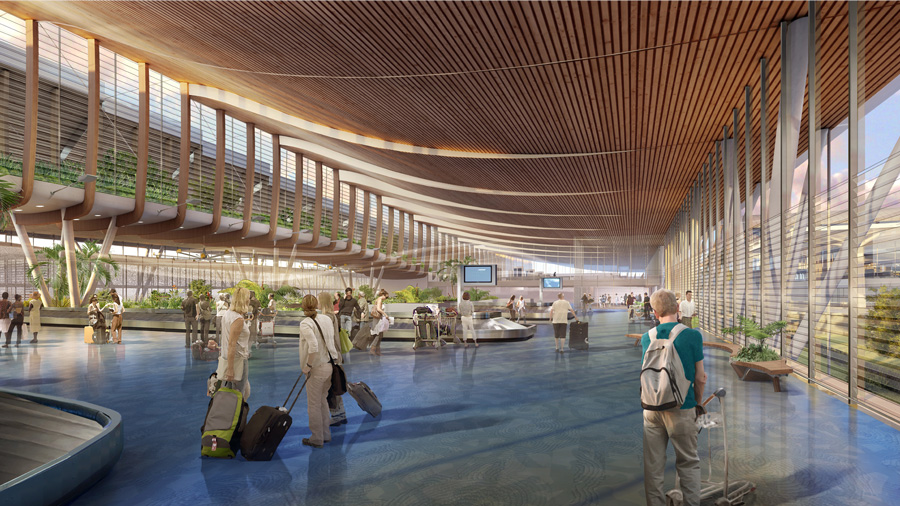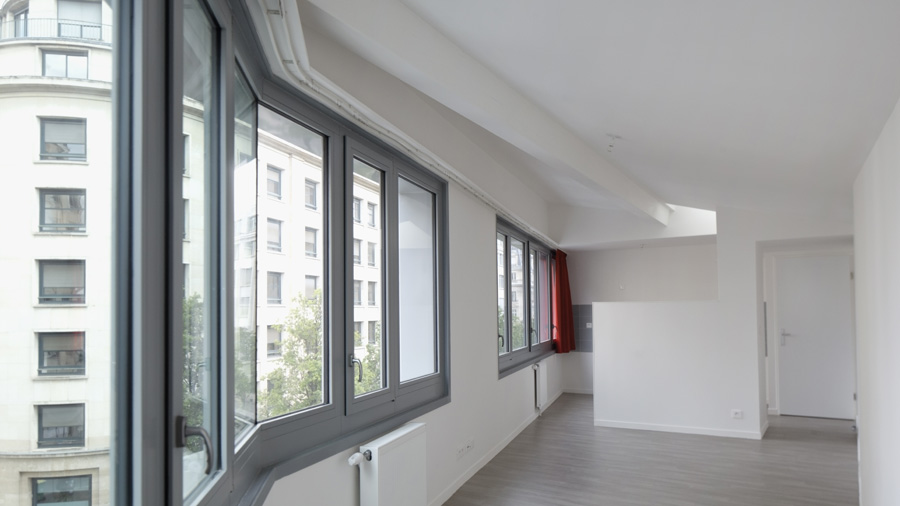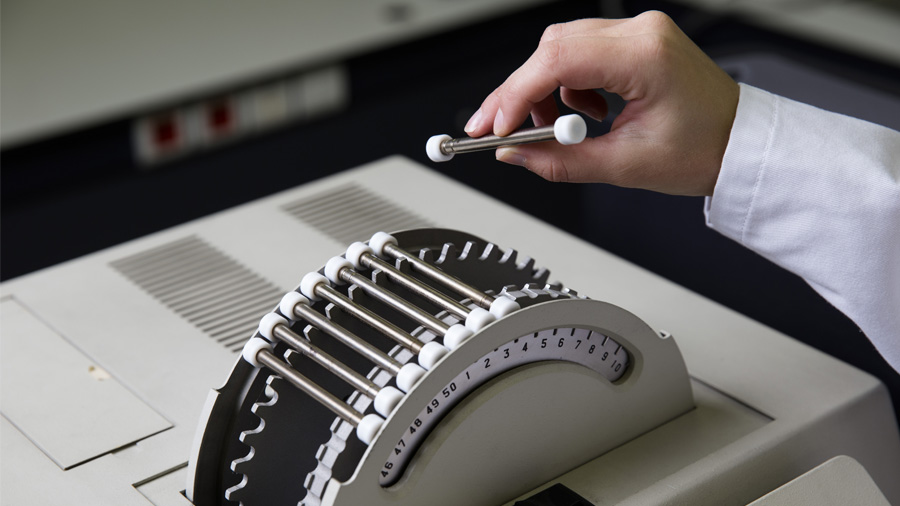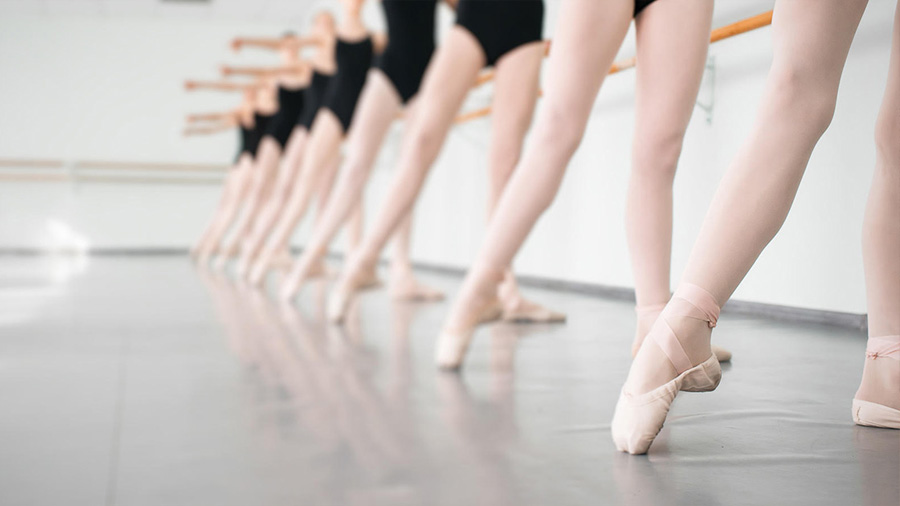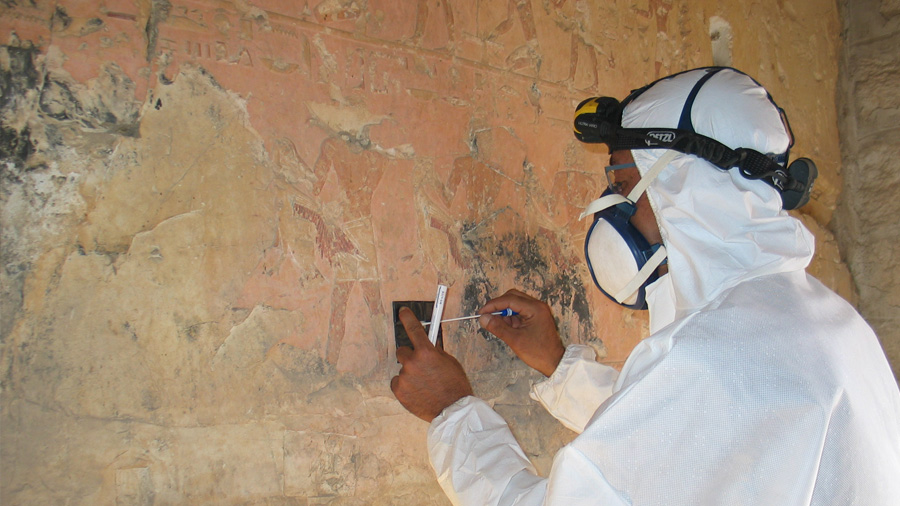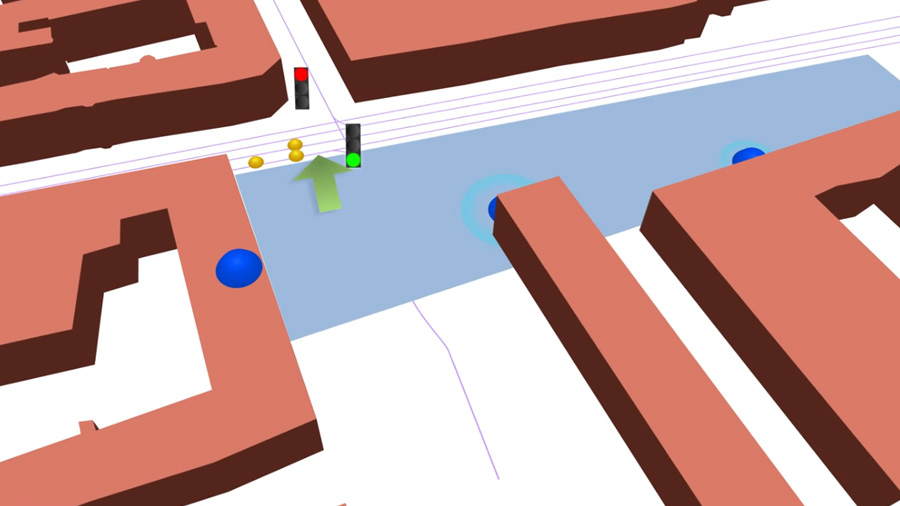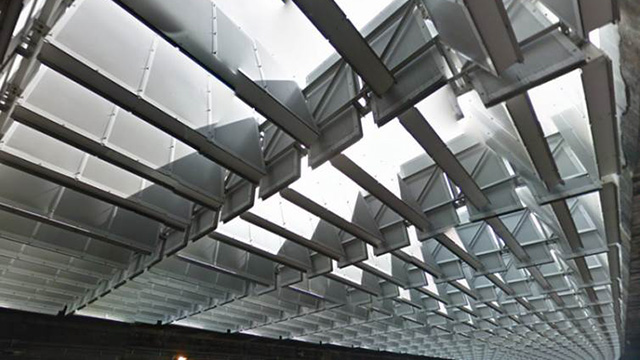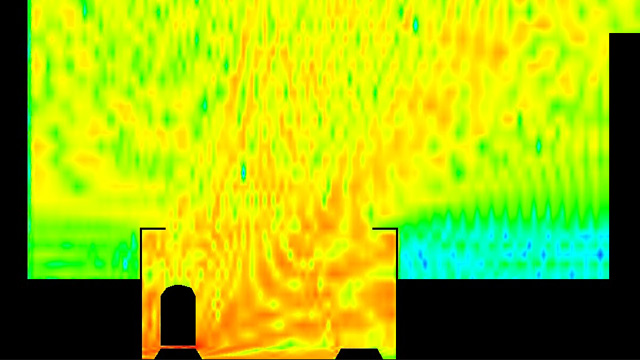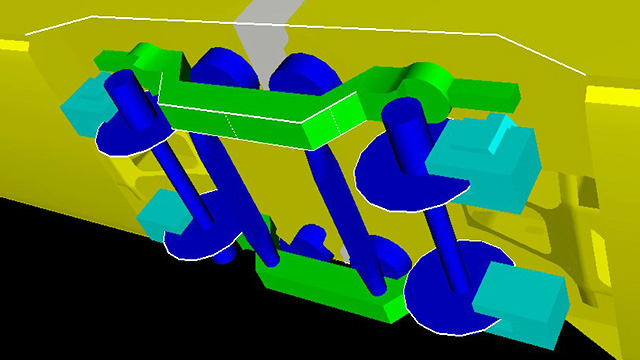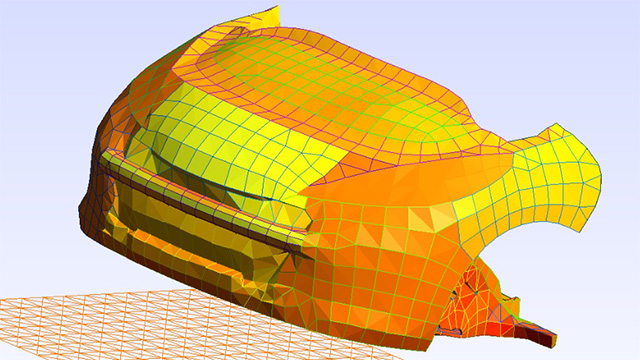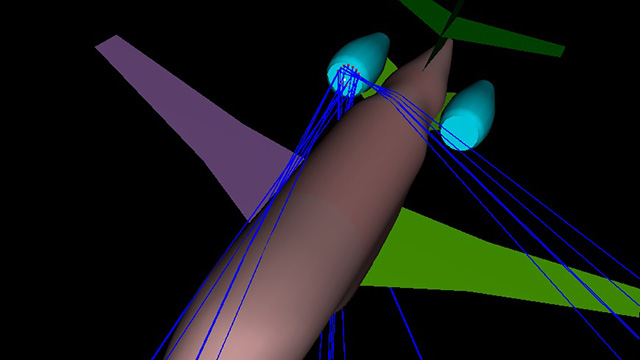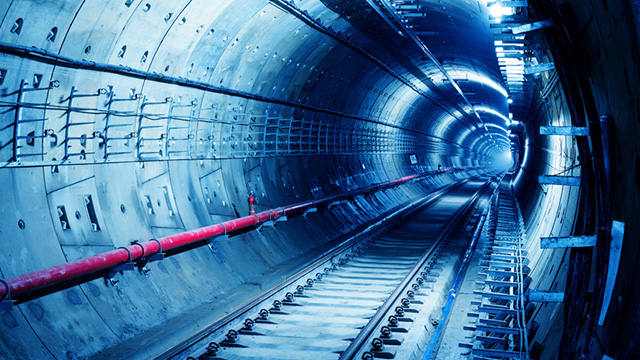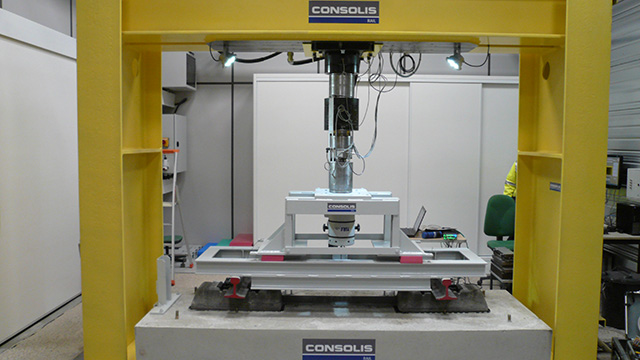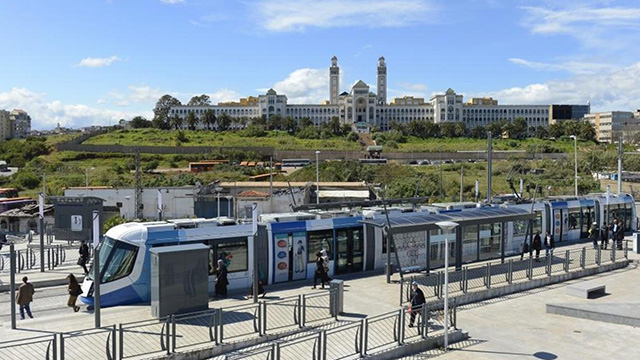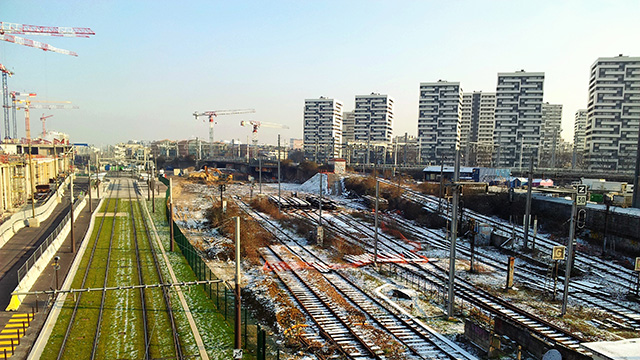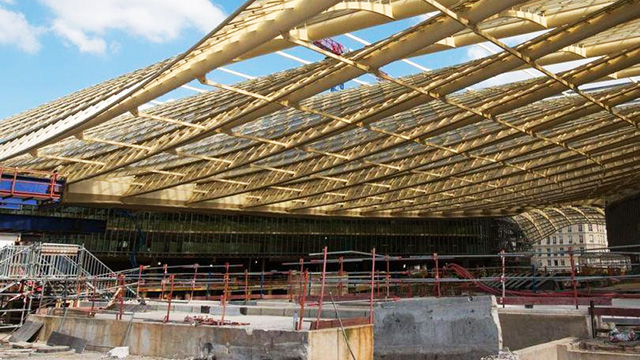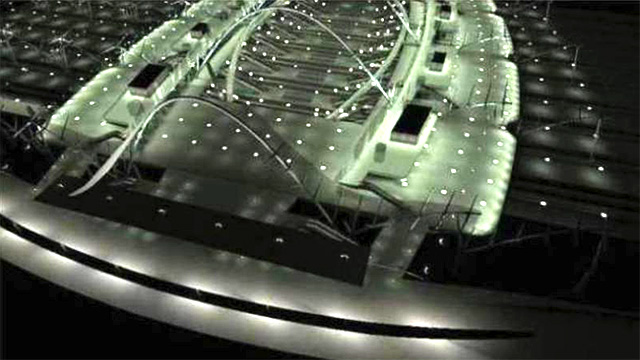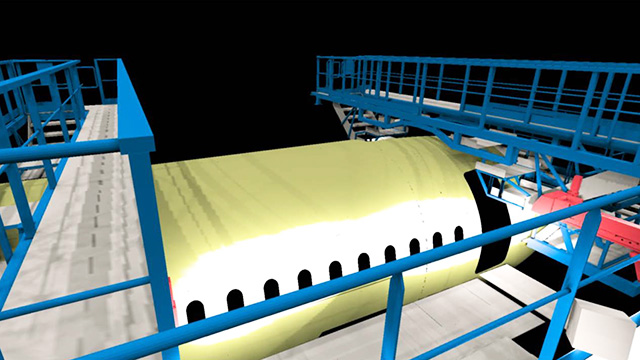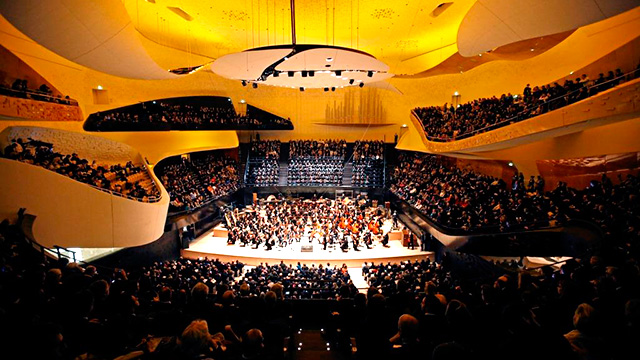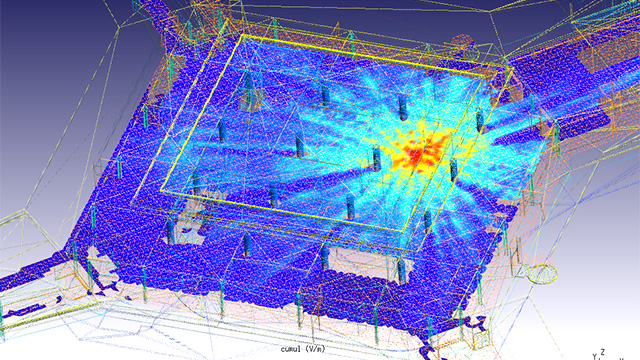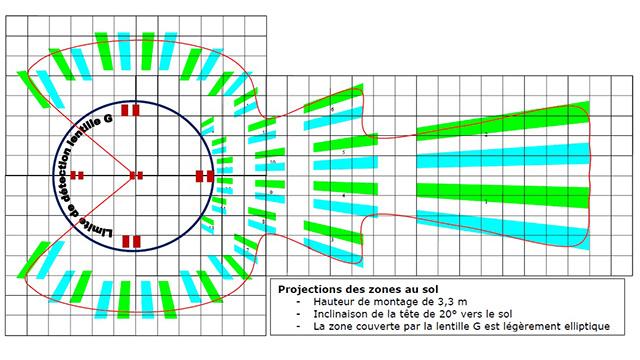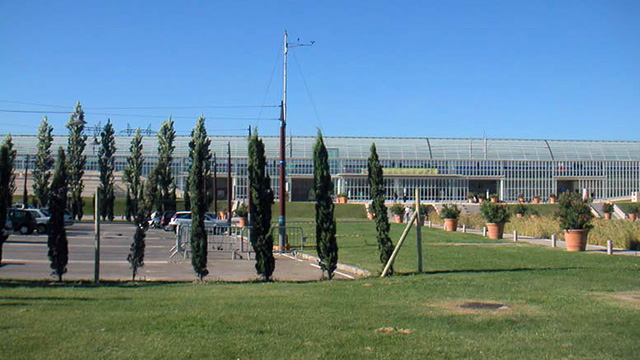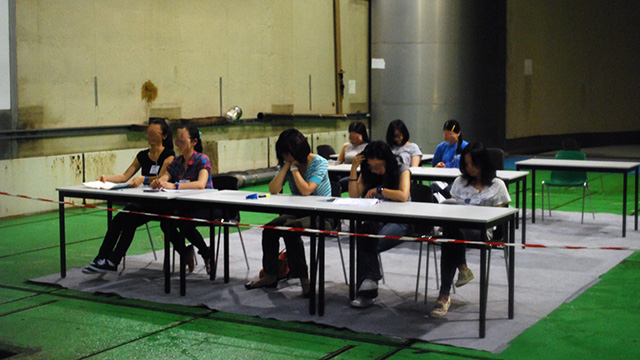Well-being is central to the challenges of sustainable construction. Whether considering a building or its urban environment, exposures and hazards are numerous. They are related to a number of physiological and environmental factors, such as exposure to physical, chemical and microbiological pollutants and the perception of thermal, noise, vibration and light discomfort. The CSTB conducts research to characterize and predict exposure in buildings and their environments and guides the design and development of solutions to protect people and ensure safe and comfortable environments.
Indoor air quality
Our services
- Assistance with implementing indoor air quality monitoring
- Assessment and monitoring of air contaminants (biological and physicochemical): search for sources, analysis of ventilation conditions
- Analysis of pollutant transfer between ground and buildings
- Consulting on the protection of buildings from ground-level gaseous pollutants (radon, SSP)
- Assistance with developing and assessing technological solutions for air purification, microbiological decontamination and indoor air quality monitoring
- Consulting on the health safety of building products and systems
- Detecting and monitoring mold in buildings (fungal biodetector)
Methodology
- Large scale in situ measurement campaigns (regional and national)
- Building audits: ventilation, physicochemical pollution, biocontamination
- Full-scale measurement campaigns in controlled environments
- Database management and statistical analysis of operational feedback
- Numerical simulation of ventilation conditions (airflow and hydrothermal properties)
- Product characterization: emissions, adsorption and reactivity of pollutants
Technological platforms
Laboratories:
- Microbiological risk management
- Applied virology
- Physics of aerosols (particle emissions of products)
- Bacteriology and mycology
- Assessment of volatile organic compound (VOC) emissions
- Mobile microbiology laboratory (prevention of Legionnaire’s disease)
- MARIA experimental house
- ASTERIA realistic test environment
References
Acoustics and environmental vibrations
Our services
- Modeling of noise sources and propagation of sound waves outdoors at all scales (streets, neighborhoods, cities, long distances)
- Prediction of noise exposure and soundscape quality
- Optimized design of innovative, complex acoustic devices (noise barriers, diffusers, etc.)
- 3D audio rendering of complex sound environments (indoor and outdoor)
- Acoustic performance of materials, building components and structures
- Sound quality of complex interior spaces (vehicle interiors, offices, performance halls, museums, etc.)
- Study of environmental vibration propagation and coupling with buildings
- Performance of antivibration devices (for train rails, building structures, etc.)
- Prediction of structure-borne noise
Methodology
- Assistance with technical communication and dissemination
- Development of specific prediction tools and simplified engineering methods
- Consultancy using advanced prediction tools (quantitative and qualitative restitution – realistic 3D sound rendering)
- In situ assessment (measurement campaigns)
- Development of specific test benches
-
MICADO: prediction of acoustic reflection, absorption and diffraction effects.
MICADO is a numerical solution based on the boundary element method (BEM). It is used for accurate prediction of sound propagation close to obstacles that have arbitrarily complex geometries, for any material, such as innovative noise protections. -
MEFISSTO: vibration propagation in the ground and in structures.
MEFISSTO is a numerical solution for calculating the propagation of vibrations in the ground and structures. It is based on finite element (structures) and boundary elements (propagation in the ground) methods. It can be used to size vibration reduction systems for buildings or predict surface vibration caused by the pass-by of trains in tunnels. -
MithraSON: simulation of soundscapes.
MithraSON is a unique tool capable of realistic 3D audio rendering of any outdoor sound environment. Any source can be integrated: industrial and city noise, traffic, etc. It is possible to navigate in real time through a reconstructed environment to assess the impact of various facilities by listening to the audio rendering. -
ATMOS: atmospheric effects on sound propagation over long distances.
ATMOS predicts the acoustic impact over long distances, up to several kilometers, for all types of exterior noise sources (ground transportation, industry and even wind turbines). This tool quantifies the influence of weather conditions (including wind profile and direction), nature and shape of the ground, and even obstacles, such as noise barriers, on perceived noise levels far from sources.
-
ICARE: acoustic simulation.
ICARE is a solution of acoustic propagation using asymptotic methods in complex 3D environments. This tool has a broad range of applications, especially in the transportation industry, and can be used for instance to guarantee good intelligibility in vehicle interiors. -
AcouSPACE: acoustic simulation in complex indoor environments
AcouSPACE has been developed to assist acoustic consultants and guarantee the acoustic performance of complex interior spaces, such as open-plan offices. This tool predicts the standard criteria used in acoustic quality (mentioned in ISO 3382 NF S31-199, etc.). -
AcouBAT: prediction of the acoustic performance of buildings.
AcouBAT assesses insulation from airborne sound, impact noise, and equipment noise in buildings. Ideal for integrating acoustics from the start of projects, it helps optimizing the performance, whether as part of a regulatory framework, quality approach (Qualitel, HQE/LEED/BREEAM certification) or unique specifications. -
AcouSYS: prediction of the acoustic performance of systems.
AcouSYS predicts the acoustic performance of systems in use in buildings and in the transportation industry (automotive, aeronautics and railways). The transfer matrix method is combined in this software with spatial windowing to include the finite dimensions of systems. The acoustic performance of components can be optimized in terms of sound-insulation, noise impact level and acoustic absorption.
-
MithraSIG: acoustic mapping at the urban scale
MithraSIG predicts environmental noise in urban and rural areas (traffic, railways, industry, worksites, etc.). It is based on a rapid ray tracing method combined with a powerful spatial information system (SIS) to perform acoustic impact studies, as well as strategic large-scale noise mappings.
-
Carmen
Carmen is an electroacoustic system based on an active virtual wall principle that adapts a room’s acoustics to the type of performance. This system was designed to produce marked variability while maintaining the most natural acoustic effects possible. In many cases, it is the ideal solution to correct problematic acoustics in venues.
Technological platforms
LABE: European Laboratory of Building Acoustics
- Measurements of the acoustic properties of building components (absorption, sound insulation, structure-borne sound, rain noise level, etc.) using standardized methods
- Characterization of the acoustic properties of porous materials (airflow resistance, porosity, etc.)
References
Lighting and electromagnetism
Our services
- Characterization and optimization of artificial lighting systems for visual comfort
- Characterization and optimization of the use of natural lighting
- Optimization of the energy consumption of lighting installations
- Assistance in the development of industrial lighting sources
- Development of occupancy sensors (infrared lenses)
- Prediction of radio frequency waves exposure in urban settings and buildings (mobile phones, Wi-Fi, etc.)
- Characterization of the electromagnetic performance of products and radiation of light sources
Methodology
-
PHANIE: prediction of lighting environments.
PHANIE is a physical lighting solution, capable of processing highly complex scenes. Right from the design phase of a room or building, this software can define and visualize lighting scenarios, depending on multiple parameters: architecture, natural lighting sources and climate, lamps and light fixtures and type of materials. It also processes exterior scenes, including assessment of problems and optimization of urban street lighting, characterization and optimization of solar potential and determination of the impact of large structures on sunlight levels.
-
ICARE-RF: 3D electromagnetic simulation in complex environments.
ICARE-RF is a simulation tool for electromagnetic propagation using asymptotic methods in complex 3D environments. This tool can also be used to optimize the placement of antennas in crowded spaces (inside building, on ship superstructures, etc.) and predict the exposure of individuals in those spaces.
-
MithraREM: mapping of exposure to radio frequency waves at the urban scale.
This software predicts the electromagnetic exposure from existing or future radio transmitters; such as cell phone antennas at the city scale. MithraREM uses high-performance algorithms based on ray tracing asymptotic methods, combined with a powerful geographical information system (SIS).
Technological platforms
- Lamp characterization facility – goniophotometer in close and far field (Nantes/Grenoble)
- Bidirectional Reflectance Distribution Function (BRDF) measurement facility (Nantes)
- Phéline platform (Grenoble): electromagnetic compatibility, measurement of radiation from ultra-high frequency (UHF) anechoic chamber sources
References
Climatic comfort
Our services
- Characterization of pedestrian comfort and safety in urban wind
- Aerodynamic solutions for pedestrian comfort
- Characterization and optimization of indoor ventilation
- Characterization of the performance of green features (vertical and rooftop gardens)
- Characterization of comfort and hygrothermal risk
- Assistance with the design of intelligent systems for controlling thermal and aerothermal comfort in vehicle interior
Methodology
- Characterization of wind comfort through measurement campaigns (models and in situ)
- Digital simulation: wind flow around structures, humidity, temperature and airflow in buildings
- Expert use of climate databases
-
MATHIS: dynamic predictive tool for temperature and airflow
MATHIS is a predictive tool that uses a nodal model for calculating the dynamic changes to climatic physical quantities in buildings (temperature, pressure, airflow, humidity) based on external data (wind, temperature, etc.). The effectiveness of ventilation systems and natural ventilation can be studied with this tool.
Technological platforms
References
Perceived analysis of comfort and environmental hazards
Our services
- Multicriteria assessment of comfort
- Analysis and objective documentation of comfort, well-being and discomfort perceived or felt in any environment
- Determination of the influence of individual and social factors on environmental comfort and well-being
- Analysis of uses, and identification of change management processes
- Analysis and psychosocial management in crisis situations (sick building syndrome, etc.)
Methodology
- Multicriteria sensory and physiological analysis of the perceived quality of materials, products and places by the PULSE laboratory
- Biophysical measurements (infrared thermography of the face, cutaneous microcirculation, etc.) applied to the physiological responses of the body
- Conduct and analysis of surveys using questionnaires and interviews
- Mental mapping
- Use of databases for statistical purposes
References
Contact
